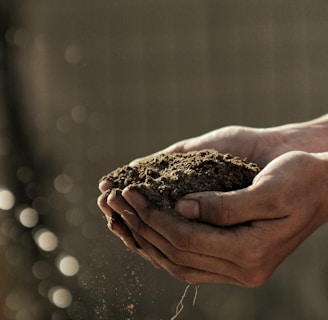Ensuring Sustainability Across Five Key Areas of the Economy
As we confront the urgent need for a sustainable future, it's imperative to recognize the pivotal role of key economic sectors in shaping environmental and social outcomes.
SUSTAINABILITY
Ensuring Sustainability Across Five Key Areas of the Economy
As we confront the urgent need for a sustainable future, it's imperative to recognize the pivotal role of key economic sectors in shaping environmental and social outcomes. By prioritizing sustainability across these sectors, we can mitigate climate change, promote social equity, and foster resilience. This article examines five critical areas—agriculture and food, energy, transportation, goods production, and finance—and outlines strategies for achieving sustainability in each.
27/03/2024 . 4 min read


1. Agriculture and Food: Embracing Plant-Based Eating
Agriculture is a cornerstone of sustainability, and promoting plant-based eating is a key strategy for reducing its environmental footprint. Plant-based diets require fewer natural resources, emit fewer greenhouse gases, and alleviate pressure on ecosystems compared to meat-heavy diets. By shifting towards plant-centric eating patterns, individuals can significantly reduce their carbon footprint and contribute to global food security. Moreover, sustainable agricultural practices, such as regenerative farming and agroforestry, can restore soil health, conserve water, and enhance biodiversity, further promoting environmental sustainability.
2. Energy: Transitioning to Renewable Sources
Transitioning to renewable energy sources is crucial for reducing greenhouse gas emissions and combating climate change. Investing in solar, wind, hydroelectric, and geothermal energy can decarbonize the economy, enhance energy security, and create jobs in the burgeoning green energy sector. By prioritizing renewable energy infrastructure and phasing out fossil fuel subsidies, governments can accelerate the transition to a sustainable energy future while fostering economic growth and innovation.


4. Goods Production: Embracing Circular Economy Principles
Transitioning to a circular economy is essential for reducing waste and promoting resource efficiency in goods production. By designing products for durability, reparability, and recyclability, businesses can minimize waste and conserve resources throughout the product lifecycle. Additionally, embracing circular business models, such as product-as-a-service and sharing economies, can foster innovation and create new economic opportunities while reducing environmental impact.
3.Transportation: Promoting Sustainable Mobility
The transportation sector is a significant contributor to carbon emissions and air pollution. Promoting sustainable transportation modes, such as public transit, cycling, walking, and electric vehicles, can reduce emissions, alleviate congestion, and improve air quality. Additionally, investing in sustainable infrastructure, such as bike lanes, pedestrian zones, and electric vehicle charging stations, can facilitate the transition to cleaner and more efficient transportation systems.
Finance: Aligning Investments with Sustainability Goals
Finance plays a critical role in driving sustainability by directing capital towards environmentally and socially responsible projects. By integrating environmental, social, and governance (ESG) criteria into investment decisions, financial institutions can channel funds towards renewable energy, sustainable agriculture, green infrastructure, and social impact initiatives. Moreover, promoting transparency and accountability in financial markets can incentivize businesses to adopt sustainable practices and disclose their environmental and social performance.






